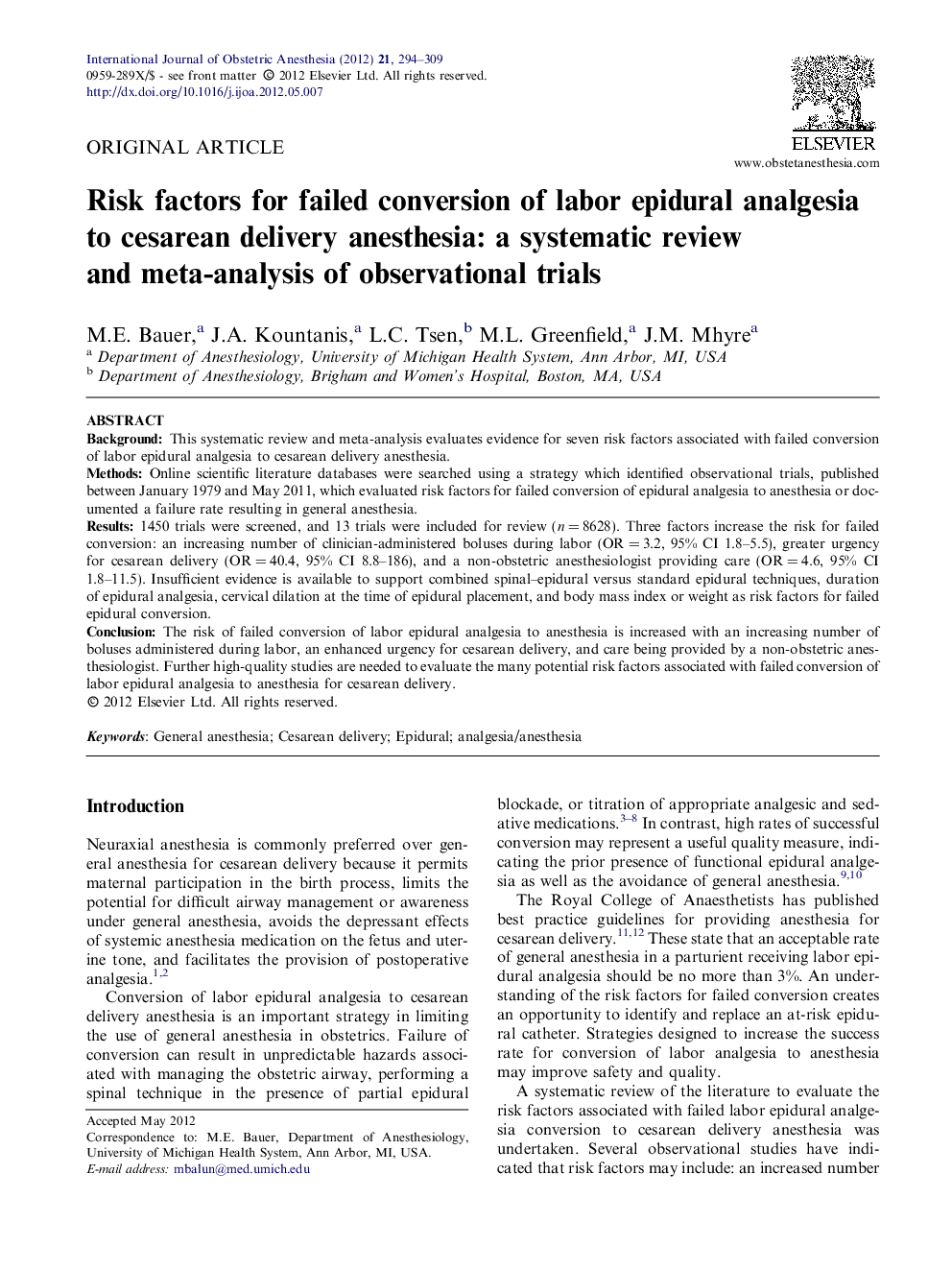| Article ID | Journal | Published Year | Pages | File Type |
|---|---|---|---|---|
| 2757883 | International Journal of Obstetric Anesthesia | 2012 | 16 Pages |
BackgroundThis systematic review and meta-analysis evaluates evidence for seven risk factors associated with failed conversion of labor epidural analgesia to cesarean delivery anesthesia.MethodsOnline scientific literature databases were searched using a strategy which identified observational trials, published between January 1979 and May 2011, which evaluated risk factors for failed conversion of epidural analgesia to anesthesia or documented a failure rate resulting in general anesthesia.Results1450 trials were screened, and 13 trials were included for review (n = 8628). Three factors increase the risk for failed conversion: an increasing number of clinician-administered boluses during labor (OR = 3.2, 95% CI 1.8–5.5), greater urgency for cesarean delivery (OR = 40.4, 95% CI 8.8–186), and a non-obstetric anesthesiologist providing care (OR = 4.6, 95% CI 1.8–11.5). Insufficient evidence is available to support combined spinal–epidural versus standard epidural techniques, duration of epidural analgesia, cervical dilation at the time of epidural placement, and body mass index or weight as risk factors for failed epidural conversion.ConclusionThe risk of failed conversion of labor epidural analgesia to anesthesia is increased with an increasing number of boluses administered during labor, an enhanced urgency for cesarean delivery, and care being provided by a non-obstetric anesthesiologist. Further high-quality studies are needed to evaluate the many potential risk factors associated with failed conversion of labor epidural analgesia to anesthesia for cesarean delivery.
